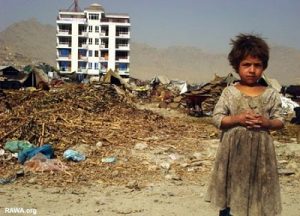Measuring Multidimensional Poverty in Kabul city
Bezhan Ssaqzai (M.A), Dr. Sayed Kazam Hosseni, Dr. Sayed jafar Ahmadi phd
Abstract

The aim of this study is “measuring multidimensional poverty” in Kabul city.
The research type is Descriptive and Analytical, Statistical population of the study are residents of Kabul city. Survey sampling is random sampling of 500 people of Kabul residents, to achieve the research goals a questionnaire containing 30 questions of researcher was used, This questionnaire validated based on the Quran and traditions Cronbach’s alpha which is 0.79. In order to analyze the data from the Kolmogorov – Smirnov F sampling and parametric tests were used. SPSS software was used for this purpose, findings showed that the poverty rate among the different areas of the city which there are significant statistically differences, The results obtained shows that the highest rates of multidimensional poverty in the Kabul city is in districts 18, 16,9,12 and 20, and the least rates of multidimensional poverty in the Kabul city is in districts 1, 2, 3 and i4 the highest rate of poor health is in districts 7 and 8 and the less poor health is in 1,2,3 and 4 the highest rate of lack of housing is in districts 6,9,12 and 18, and least lack of housing is in districts 1,2,3 and 4, poorest region of the Kabul based on the income approach is district 7 and 8 the highest rate of illiteracy is in district 5,10,21,22 and 15 the least rate of illiteracy is in districts 16,12, and 9.
Key words: Multidimensional poverty, poverty line, relative deprivation and component of the poverty line.
Sharing: